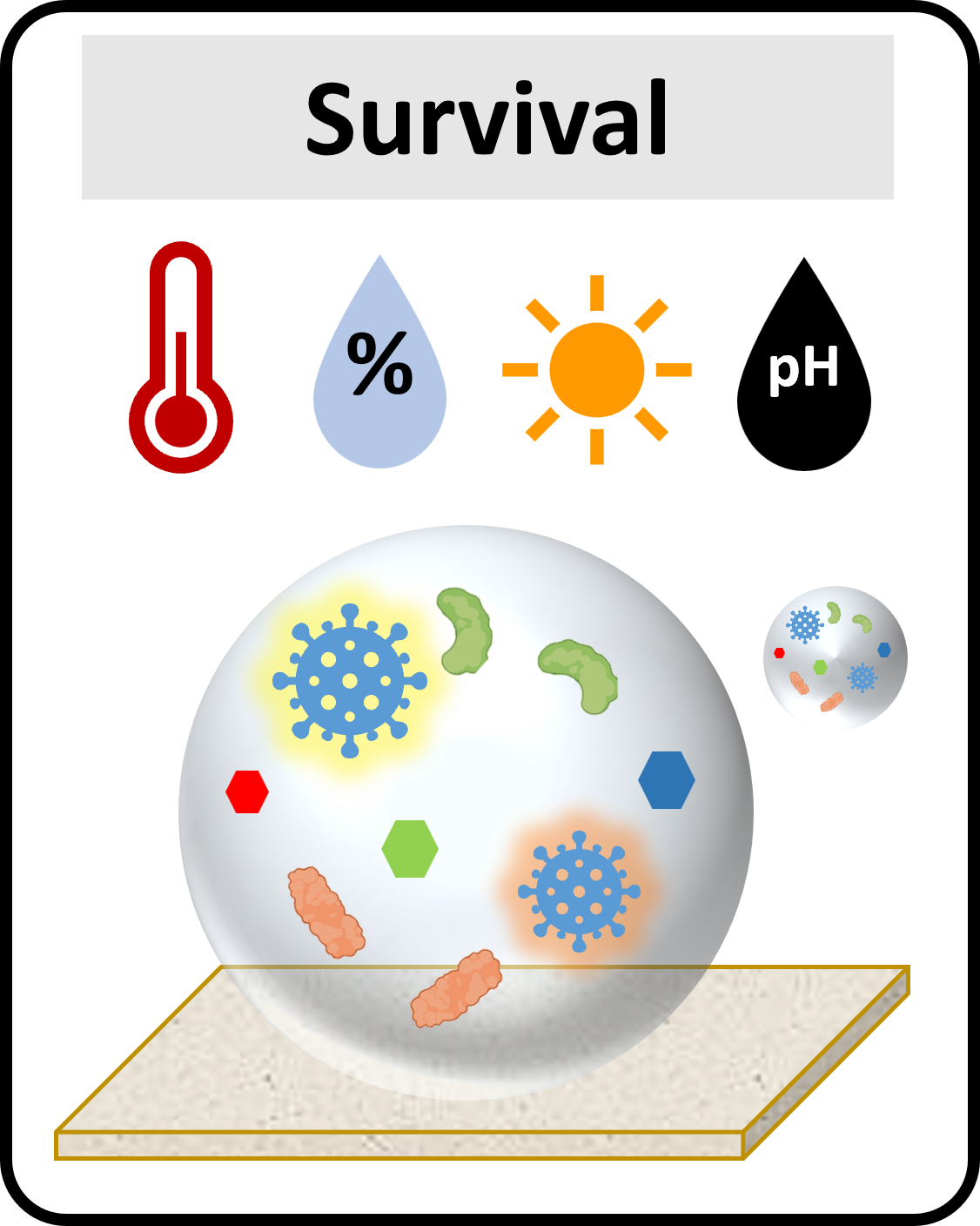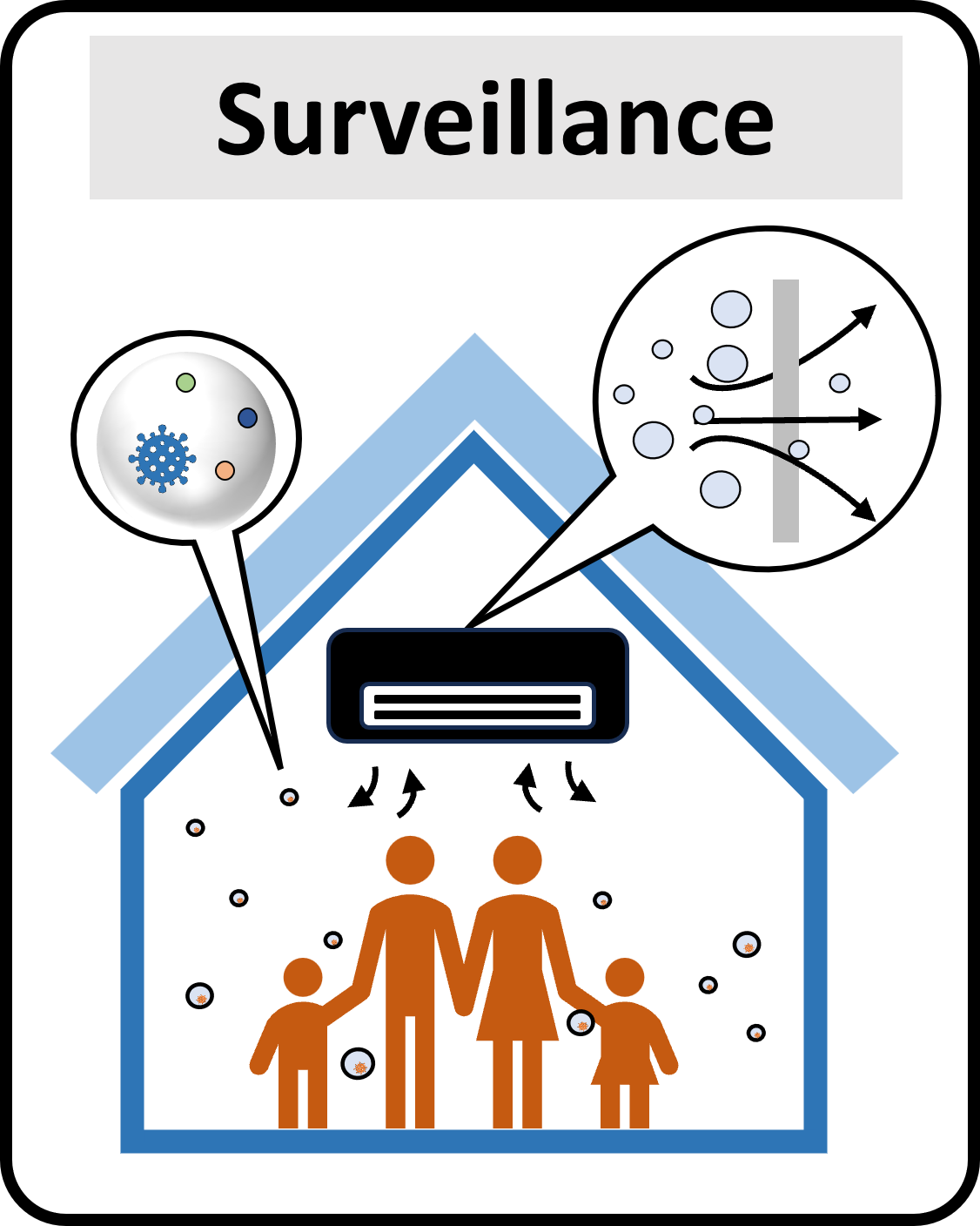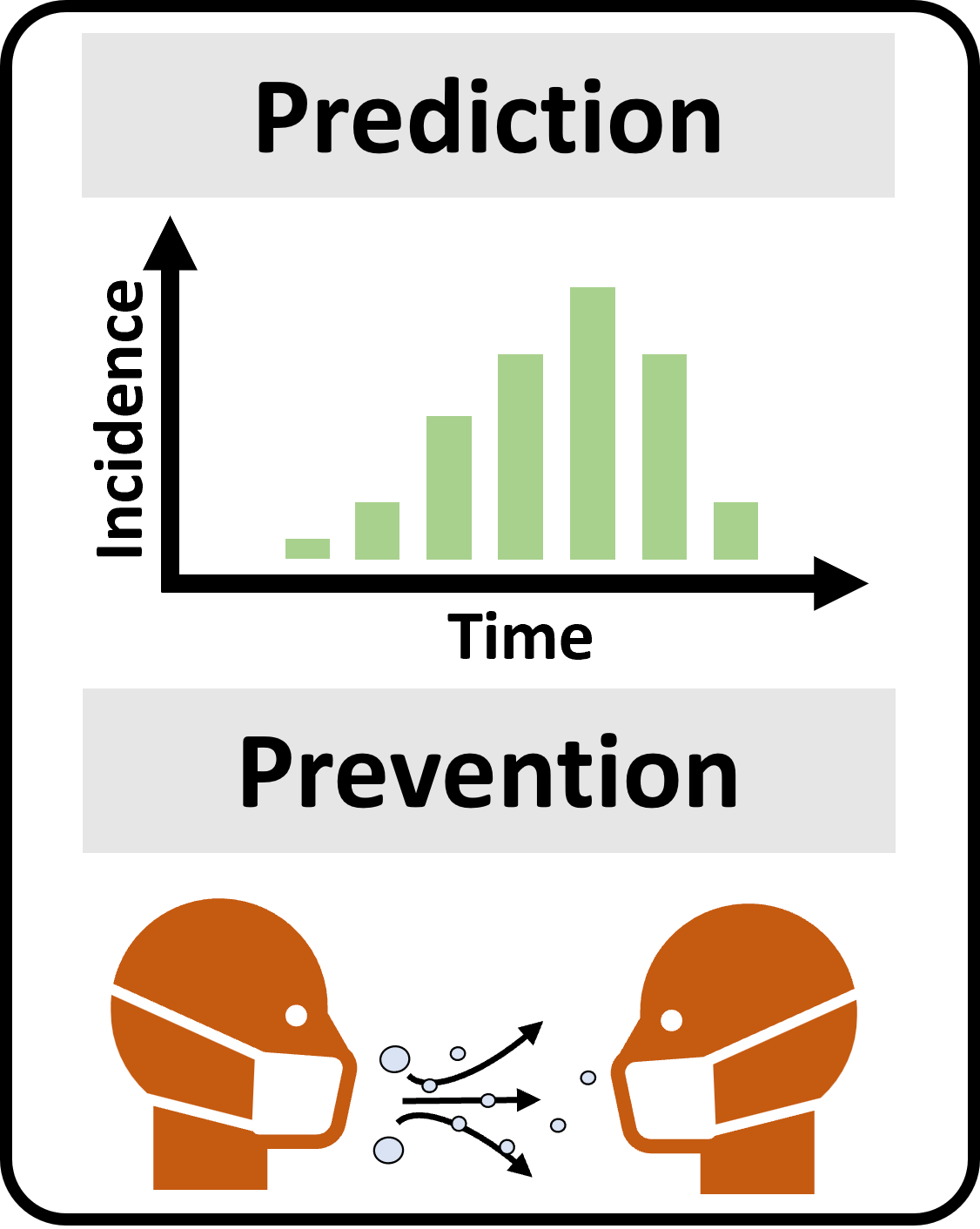
Many respiratory diseases have presented a seasonality, which has been shown to correlate with temperature and humidity changes. Additionally, the compositions of air and respiratory fluids will significantly impact the infectivity of the pathogen and potentially the transmission capability. We aim to investigate the interactions of current and emerging respiratory bacterial or viral pathogens with various environmental factors and other air pollutants to evaluate their risks and potential transmission routes.

Implementing a resilient surveillance system for respiratory diseases in humans can minimize the temporal gap between disease outbreaks and public awareness. We aim to develop and establish cost-effective sampling and surveillance system of biological and chemical air pollutants in the built environment, which will contribute to assessments of the prevalent respiratory virus or other air pollutants in local communities, enabling policymakers, healthcare professionals, and the public to respond swiftly during the initial stages of an outbreak.

Preventing respiratory diseases is often more cost-effective than treating them. Non-pharmaceutical approaches, particularly preventative methods, play a crucial role in minimizing adverse health impacts and economic losses. We aim to design, evaluate, and implement non-pharmaceutical strategies to reduce air pollutants and mitigate respiratory disease transmission within various environmental settings.